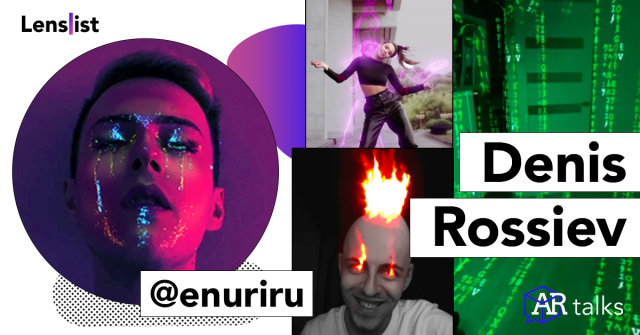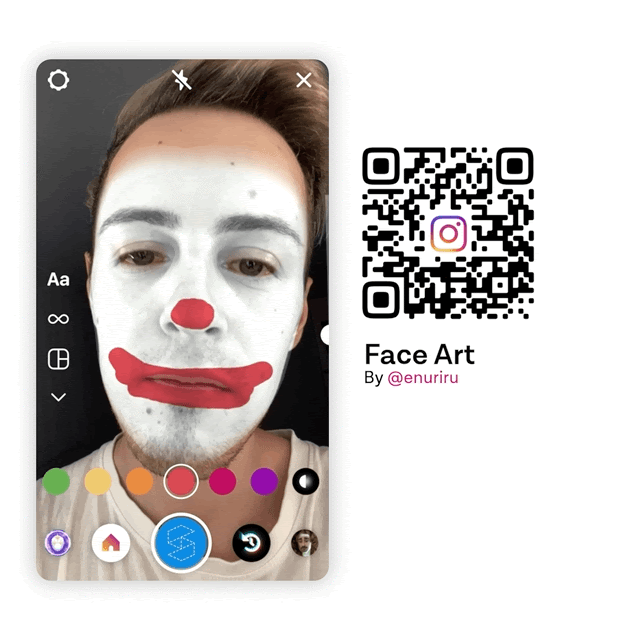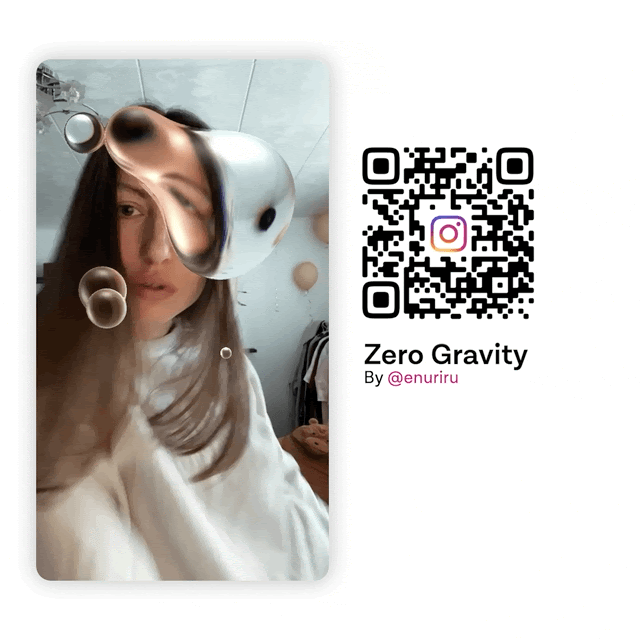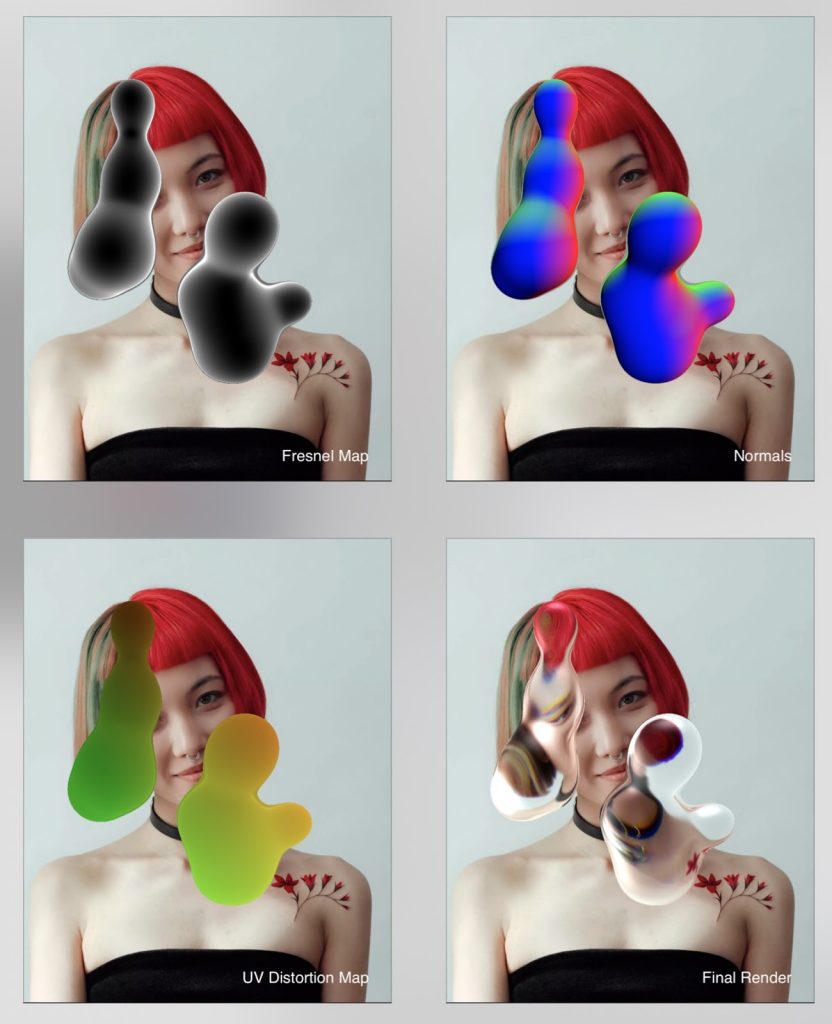AR Talks | Denis Rossiev

Denis Rossiev, a brilliant multiplatform AR Creator from cold Siberia, has accepted our invitation and answered our questions considering his AR journey and plans for the future. Dive in to know more about his filters and read his very vivid comparison of Spark AR (Instagram studio) and Snap’s Lens Studio 👇
Denis, first please tell us more about yourself – where are you from, what is your background?
 Hi there! I’m from Siberia, Russia 😬 Well, my background is a long story! I always was obsessed with building something. I started with LEGO (lol) when I was about 6 years old, then I’ve been learning programming in school. But I always cared about not only how it works, but also how it looks, and how it interacts. I entered the technical university and… Quited it. Cause suddenly figured out I need more soft skills. So I started learning marketing, design, photography. Well, everything related to digital. I ended up working as art-lead in a small studio, but with big projects. We’ve made a lot of gamification projects on social networks for Russian brands. But COVID almost ruined it.
Hi there! I’m from Siberia, Russia 😬 Well, my background is a long story! I always was obsessed with building something. I started with LEGO (lol) when I was about 6 years old, then I’ve been learning programming in school. But I always cared about not only how it works, but also how it looks, and how it interacts. I entered the technical university and… Quited it. Cause suddenly figured out I need more soft skills. So I started learning marketing, design, photography. Well, everything related to digital. I ended up working as art-lead in a small studio, but with big projects. We’ve made a lot of gamification projects on social networks for Russian brands. But COVID almost ruined it.
Now please describe your AR journey – how did you get into it and what made you go for it as hard as you do? :))
 My first contact in Social AR was… Probably between 2016-2018, when I’ve seen the first Snapchat real-time lenses. You know, that dog filter with ears and tongue. At first, I was like “This is complete shit. Who will ever use it?”. But then… “Damn, I’d like to learn the technology behind it. It’s the future!” And forgot about it until Jan 2019, when I found out we can make Instagram effects. These times we had to request access to upload effects. So I made this thing… And forgot about it again until August, missed all the hype train with “follow to unlock filters”. My million followers have stuck somewhere in a parallel universe.
My first contact in Social AR was… Probably between 2016-2018, when I’ve seen the first Snapchat real-time lenses. You know, that dog filter with ears and tongue. At first, I was like “This is complete shit. Who will ever use it?”. But then… “Damn, I’d like to learn the technology behind it. It’s the future!” And forgot about it until Jan 2019, when I found out we can make Instagram effects. These times we had to request access to upload effects. So I made this thing… And forgot about it again until August, missed all the hype train with “follow to unlock filters”. My million followers have stuck somewhere in a parallel universe.
So I started learning. God, it was hard! Today there are a lot of tutorials for most basic and even medium projects. But these times we had to learn everything ourselves. But my background helped me a lot. As a programmer, I’m familiar with maths and coding, so visual coding with patches is even simpler. And I knew Javascript already. As a designer, I know how to make the effect look good and how to build a convenient UI. I even worked with VFX and OpenGL a lot, so learned Spark AR specific shader stuff pretty fast.
I think that objectively we can say that you’re one of the most talented, but also hard-working people in this space, always coming up with new ideas, experimenting with new features. Do you consider AR your passion, your job or the combination of both?
 Haha, thanks! I believe it’s always 10% of talent and 90% of hard work. Well, it’s started as a big passion and it still is. But it’s also a job. I can say I’ve not worked for two years! I’ve been creating 🙂
Haha, thanks! I believe it’s always 10% of talent and 90% of hard work. Well, it’s started as a big passion and it still is. But it’s also a job. I can say I’ve not worked for two years! I’ve been creating 🙂
You’re both an OLC and Spark AR Partner – could you explain the biggest differences between for one the development process within these two softwares, but also when it comes to the partnership programs themselves?
 Well, the biggest difference is an entry threshold. Spark AR is much, much easier, thanks to visual coding! A complete node graph, where you can combine shaders and logic, is really something. I’d say it’s a “new generation engine”. That’s why there are ten times more cool and high-quality effects on Instagram. Every artist, even not really familiar with programming, can build something good.
Well, the biggest difference is an entry threshold. Spark AR is much, much easier, thanks to visual coding! A complete node graph, where you can combine shaders and logic, is really something. I’d say it’s a “new generation engine”. That’s why there are ten times more cool and high-quality effects on Instagram. Every artist, even not really familiar with programming, can build something good.
Yea, Lens Studio has a script graph and helper scripts, but it’s a completely different thing. And though they have a lot of good templates, every step aside from the template is a pain for beginners and even skilled Spark AR creators. You just encounter the fact that you have to learn javascript programming, or you will create nothing. And learning JS could take years.
Though Lens Studio is more complicated, it has a lot of unique and advanced features. Different segmentations that work simultaneously. Machine learning! Multiple cameras. Absolutely everything could is accessible from script. And something really cool is coming soon 😉
What about partner programs, I can’t say a lot, you know. Just some feelings: Facebook is more serious, and Snapchat brings some startup vibes, though it’s a big company too. It’s also hard to compare cause Snap OLC program has started about two years ago (if I remember right), and Spark AR Partner Networks has started in October 2020. The most of processes about how to work with partners are still actively developing.
Could you please pick 3 of your favorite filters/Lenses you made and explain your picks?
 Honestly it’s hard to choose. I try to raise the bar with every new project! I like to impress people, show them something really new, another way where AR could go. Check out dozens of effects on my website!
Honestly it’s hard to choose. I try to raise the bar with every new project! I like to impress people, show them something really new, another way where AR could go. Check out dozens of effects on my website!

This thing is more like an app, than just an effect. You can draw anything on your face in real-time with a solid line and undo the last action. You can pick a color from the palette, change brush size, smoothness and opacity. There is also a magical export and import feature: you can save artwork, send it to your friends and they can load it into Face Art again.

This is really f**king complicated!

This thing looks pretty simple, but really proud about the underlying technology. Water bubbles merge and split, reacting to user movement. Works on user’s face and on a plane tracker. This kind of effect is impossible to achieve using classic 3D animations, so it’s made with custom rendering.
The effect is based on raymarching, a 3D SDF rendering technology, where every 3D object is custom-generated and rendered in real-time. I spent weeks optimizing it for Spak AR and ended up with fully functional engine-in-shader that supports geometry, shadows, true raytraced reflections, standard (phong) and physically-based materials, normal maps, texturing and more.


A very fresh project I didn’t even publish yet 🙂 Made it to celebrate Holi, so it’s all about colors. This lens uses image motion sense technology: it detects where you move and paint starts to flow in the opposite direction. Colors also depend on direction and changes over time. The more you move, the further paint flows!
Since last year Lens Studio introduced some pretty powerful features that seem to carry lots of potential in terms of innovation within the social AR space (e.g. LiDAR, SnapML, Full Body Tracking). Which do you consider the most interesting? And do you think that the market (brands, marketers, end-users) is ready for trying out and implementing these advanced features in their AR marketing campaigns?
 I like LiDAR the most, cause it raises World AR to the whole new level. It gives us super-stable tracking, scene geometry understanding (we can identify floor, walls) and a lot of cool features like spatial occluding (it means if our AR object is behind the sofa, it will not be visible). But the problem is, for now there are very few LiDAR-enabled devices and they are very expensive.
I like LiDAR the most, cause it raises World AR to the whole new level. It gives us super-stable tracking, scene geometry understanding (we can identify floor, walls) and a lot of cool features like spatial occluding (it means if our AR object is behind the sofa, it will not be visible). But the problem is, for now there are very few LiDAR-enabled devices and they are very expensive.
Check out AR / LiDAR highlights on my Instagram profile for some cool experiments!
I guess Full-Body Tracking will become popular for clothing, fitness and dance brands soon. SnapML also gives us a lot of possibilities, like custom segmentations and object detection.
How would you describe your style and where do you get your inspiration from?
 I don’t think I have a dedicated style. Just do what I like 🙂 I always care about UI, performance and overall experience. But usually I say I do visual effects or just something complicated that requires integrated vision and massive, diverse background.
I don’t think I have a dedicated style. Just do what I like 🙂 I always care about UI, performance and overall experience. But usually I say I do visual effects or just something complicated that requires integrated vision and massive, diverse background.
I think I get inspiration from technology. When I discover some new feature or possibility, I instantly get dozens of ideas. If I only had time!
There is a big discussion in the AR Community about monetization. What do you think are the ways an AR Creator can monetize their skills?
 I believe the best way is to choose a niche and develop skills in it. Just don’t waste time on everything. Becoming a skilled generalist is a hard way that requires a big background, so if you’re a beginner, it’s better to choose only one or two. And the most important thing! Be active in community, on Instagram, Snapchat and Twitter. Everywhere!
I believe the best way is to choose a niche and develop skills in it. Just don’t waste time on everything. Becoming a skilled generalist is a hard way that requires a big background, so if you’re a beginner, it’s better to choose only one or two. And the most important thing! Be active in community, on Instagram, Snapchat and Twitter. Everywhere!
Build a personal brand. Yea, it requires time, a lot of it, but how to monetize if no one knows you? Try to become not someone who sells, but someone who people want to buy.
What are your plans for the future? Do you plan to establish your own AR agency, like many experienced Creators do, or maybe going another direction?
 I think the agency is boring. I’d like to work with some secret, upcoming devices and technologies. Like AR glasses or lenses. (Hire me, lol). But at the same time I want to be a public person, show people new features, educate them and tell more about augmented reality and our future. How to choose? But I hope I can combine it somehow.
I think the agency is boring. I’d like to work with some secret, upcoming devices and technologies. Like AR glasses or lenses. (Hire me, lol). But at the same time I want to be a public person, show people new features, educate them and tell more about augmented reality and our future. How to choose? But I hope I can combine it somehow.
Thanks for the interview!
